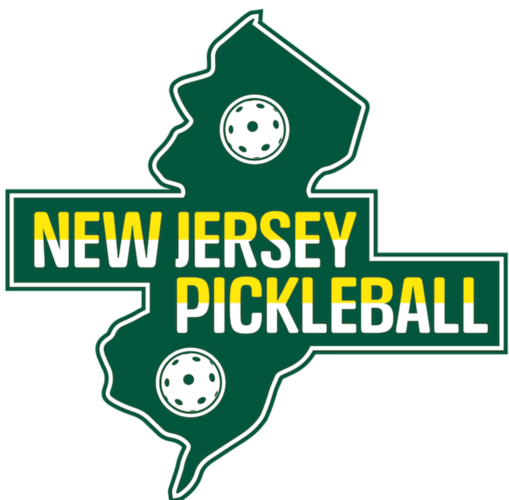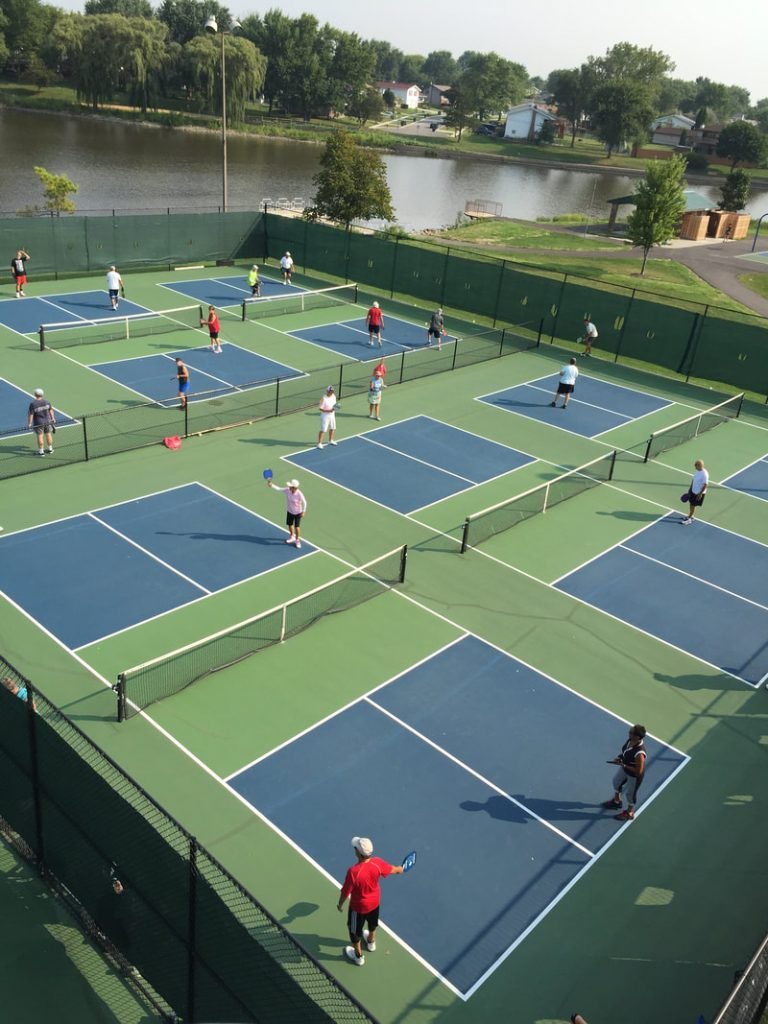Pickleball Basics
Introduction
Pickleball is a paddle sport played using a plastic ball with a tennis-like net on a badminton-sized court. Pickleball can be played in a singles or doubles format, and can be enjoyed recreationally or competitively by players of all ages and levels. The game is extremely easy to learn and play. It is currently the fastest growing sport in America!
Rules
Two Bounce Rule
After a serve, the receiving team must let the ball bounce before returning, then the serving team must let it bounce before returning, equalling two bounces. Once the ball has bounced once on each team’s side, either team can volley the ball (hit it in the air) or hit a normal groundstroke (off the bounce). The purpose of this rule is to get rid of the serve and volley advantage and extend rallies.
Non-Volley Zone ("The Kitchen")
The non-volley zone, commonly referred to as "the kitchen", is the area seven feet behind the net on both sides of the court. Players cannot volley the ball (hit it in the air) while standing in this area. This rule prevents players from coming in and slamming balls close to the net. A player’s momentum from a volley cannot cause them to step into this area even after hitting the ball. Stepping on the line bordering the non-volley zone is considered the same as stepping inside the zone. Players are allowed to stand in the non-volley zone at any time, as long as they are not hitting a ball in the air. If a player violates any of these rules, his/her team loses the point.
Faults
A fault in pickleball is anything that violates the game's rules and forces the game to stop. This happens when a player commits an error or "fault" and either hits the ball out of bounds, hits the ball into the net, commits a "foot fault" at the baseline or non-volley zone line, or violates one of pickleball’s other rules.
Line Calls
If a ball hits any part of any line on the court, it is considered in. The only exception to this rule is when a ball hits the non-volley zone line on a serve, which is considered out. If a player is not 100% sure that a ball was out, it should be called in. During most tournaments and all recreational play, calls are made by the players. Calls are expected to be made using honesty. The player or team whose side of the court the ball bounces on last must make the call.
Scoring & Service Sequence
In pickleball, points can only be scored by the serving team. Games are usually played to 11, win by 2. However, games are also sometimes played to 7, 9, or 15. Many tournaments use a format of 2 out of 3 games to 11. The specifics on how to keep track of scores and serving depend on if you are playing singles or doubles. A full explanation on pickleball scoring rules can be found here.
Shots
Serve
In pickleball, players only have 1 serve. The purpose of the serve is to place the ball in play. The serve must be hit underhand and below the waist. It can be hit in the air, or off of a bounce. Players must serve the ball diagonally to the opposite side of the court, beyond the no-volley-zone line (if the ball hits this line on a serve, it is considered out). Players should try to hit their serve deep, and return to their ready position after the shot to get ready for the next ball.
Serve Return
Serve returns must be hit by the returning team before the ball bounces. The main goal of the serve return is to put the ball deep and push your opponents to or behind the baseline, so they have a harder time hitting an effective 3rd shot or coming to the net. Players should wait behind the baseline when their opponents serve. A common way to return serves is done by hitting a slice. An explanation of the slice return can be found here.
Groundstroke (Forehand/Backhand)
Groundstrokes are the most basic shots in pickleball, and those used when balls bounce near the middle or back of the court. whenever a player returns a ball. The majority of players use a continental grip to hit these shots, though high-level players tend to vary in their groundstroke grip. Forehands are typically the most powerful shot, and are usually hit from the middle of the court or baseline.
The forehand and backhand groundstrokes are the basic strokes used whenever a player returns a ball from a position of midcourt to deep in the court. A forehand is from the same side of your body as your dominant hand, and a backhand is hit from the opposite side. The success of groundstrokes depend on ones ability to move in all directions on the court quickly and smoothly. From the moment the ball leaves the opponents paddle, players should be tracking its flight and deciding where and how they should move to hit their desired shot. Further details on groundstrokes can be found here.
Dink
The dink is a soft shot hit off the bounce from near the non-volley zone line, that drops downward into the opposing team’s non-volley zone. Hitting this shot forces opponents to let the ball bounce ball, and can be used as a neutralizer against tough shots or strong opponents. Dinks can be used offensively or defensively and placed down the line or cross court. Dinks are a part of almost every point in a game. Tactics for hitting a good dink include using a continental grip, bending your knees, aiming for the kitchen, and being patient with your shots until an opportunity arises to speed things up. Players often dink until they see a ball high enough to put away, or their opponents miss. While the word dink is a punchline for many pickleball jokes and is frequently used in a playful way, it is easily one of the most important shots in the game, and one that everyone should take seriously. Further details on dinks can be found here.
Third Shot
The third shot is exactly what it sounds like: the third shot of any point. After the serving team receives their opponent’s return, they have essentially two options for how to handle their next shot. The more common choice is a third shot drop, which is a long dink hit from or near the baseline that lands in the opponents non-volley zone. The goal of this is to allow time for the serving team to move up to the non-volley zone (these shots are high, so the ball spends a lot of time in the air). The other option, which has become more popular in recent years, is the third shot drive. This is a flatter, straighter, forehand or backhand hit quickly with the hopes of winning the point or forcing a weak return, setting up an easy fifth shot. This shot is often done when opponents are out of position or their serve return is very high. Players must be very strategic about when to drive, as a poor decision can lead to losing a point quickly.
Volley
The volley is a ball hit in the air before it bounces onto the court. A volley can be hit from anywhere, but is mainly used when at or near the non-volley zone. Volleys use the continental grip, and can be hit as a forehand or backhand (though backhands are more common).
Lob & Overhead
The lob is a lofted shot that sends the ball high overhead and deep, hit when opponents are at or near the non-volley zone. It can be hit offensively, to catch someone off guard or send them back to the baseline, or defensively, to return a slam or buy time to get back into position. Overheads are hard, overhand shots hit downwards into the opponents court, usually returning a lob or high shot. Overheads are normally hit with the goal of putting the ball away and winning the point.

